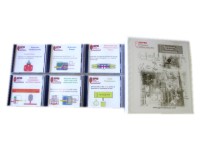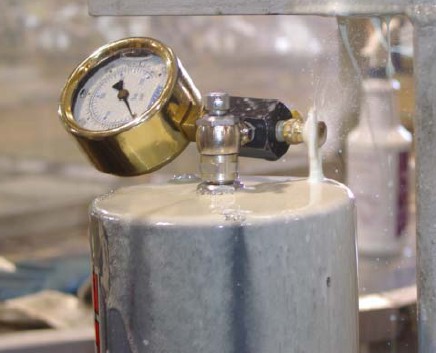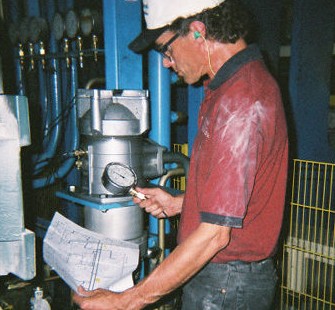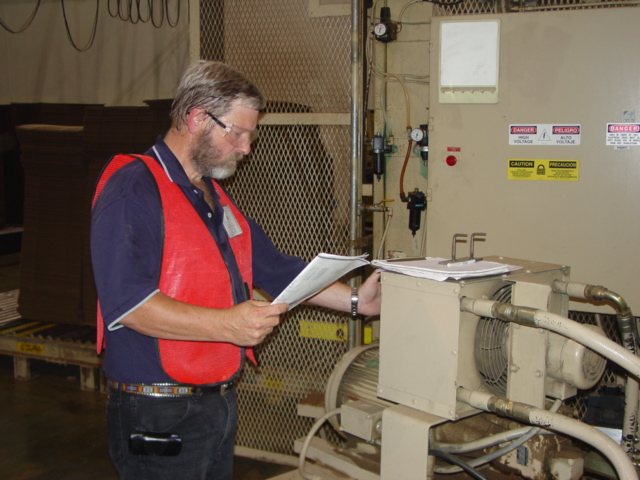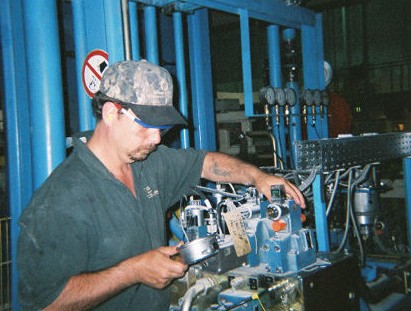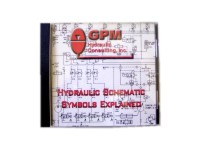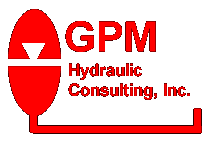
P.O. Box 689 Social Circle, GA 30025 770-464-0777 gpm@gpmhydraulic.com
|
March 2006
Do You Get This Newsletter Each Month In Your Email? If not, Click Here to Subscribe! |
||||||||||||
|
|||||||||||||
|
|
|||||||||||||
|
|
Maintenance Hydraulic Troubleshooting on Interactive CD Our nationally acclaimed
Maintenance Hydraulic Troubleshooting workshop
on six fully interactive CD's. Includes our MHT workshop manual.
6-CD Set - $1200 Individual CD's - $250
+ Shipping and Handling.
Click on http://gpmhydraulic.com/mhtcds.htm
to find out more.
|
||||||||||||
| 1. Stalls and Speed Reduction | |||||||||||||
 Jack
Weeks - Hydraulics Consultant, GPM Hydraulic Consulting, Inc. Jack
Weeks - Hydraulics Consultant, GPM Hydraulic Consulting, Inc. |
|||||||||||||
|
Tension Tester Stalling
When dimensional lumber is manufactured by gluing short pieces together at finger joints, its tensile strength must be tested and confirmed before the product can be shipped. This is a simple task, accomplished by centering the board on a stationary steel member and extending two cylinders, one at each end, to bend the board. If the board breaks, it is rejected. If it survives the bend intact, it is good enough to be shipped. Obviously, the faster the board can be bent, the more boards can be tested and shipped. In this particular instance, the cylinders would start extending rapidly, but stall part way through their stroke and very slowly finish extending. The boards were being tested, but each board took a very long time. Accumulator Red Flags When I watched the machine operate, I noted two classic symptoms of accumulator failure: the cylinders were slowing significantly part way through their stroke and the system pressure would dip very low at the instant of the stall, then gradually build back to normal. These two symptoms always mean that the system is being starved of flow and usually mean that there is a problem with an accumulator. Indeed there were two accumulators in this system, one mounted at each tensioning cylinder. But I was assured by the maintenance staff that the precharge had been checked on both accumulators and adjusted properly. They were of the belief that the pump must be badly worn and needed to be replaced. I showed them how to check the pump by measuring the flow from the case drain. Less than two percent of the total pump flow was going through the case drain, indicating that the pump was functioning as it should. I spoke with the technician who had adjusted the precharge of the accumulators. He told me that he had checked the precharge and found it to be much higher than it should have been in both accumulators. He assumed that someone had added nitrogen to them in an attempt to speed the operation of the tensioning cylinders. But the accumulators are piston type. Usually, when a piston accumulator is overcharged, it is the result of oil bypassing the piston and collecting on top. This displaces nitrogen and raises the precharge. Removing the Bypassed Oil Restores the Accumulator Capacity
We then attached a charging rig to the Schrader valve on top of the accumulator and pressurized the system. With the bleeder valve open on the rig, system pressure forced the piston to the top of the accumulator, releasing the nitrogen and exhausting all of the oil from atop the piston. A significant amount of oil was discharged from both accumulators. Once all of the oil was removed from the top of both accumulators, the system was shut down and the correct precharge was applied to them. When the machine was placed back in service, each board was tested in just a few seconds as the machine was designed to do and the pressure drops ceased along with the stalls. |
|||||||||||||
| Jack Weeks entered GPM’s organization in January of 1997 as a CAD draftsman and hydraulic instructor. He has trained thousands of electricians and mechanics in Hydraulic Troubleshooting methods. His computerized animations have made GPM's presentations and training CD's the recognized leader in the industry. He received his education from the Georgia Institute of Technology School of Electrical Engineering and the Department of State Foreign Service Institute. Jack is an experienced draftsman and taught telecommunications equipment operation and repair for the Central Intelligence Agency at American embassies overseas. | |||||||||||||
|
2. In-plant consulting and troubleshooting
Nothing is more expensive than unscheduled down time. GPM’s customers know they can call whenever they have a troubleshooting issue they simply can’t resolve. With over 50 years experience dealing with hydraulic failures, our consultants have the resources to help troubleshoot whatever hydraulic problem you encounter. Whether you’re experiencing a total system outage, repeated component failure or just need a professionally designed preventive maintenance schedule, the consultants at GPM can help. Call GPM for In-plant Troubleshooting Leakage Problems Pressure Settings Shock Problems Preventive
Maintenance Scheduling Hydraulic Troubleshooting Manual Development Startup
Consulting and Recommendations Heat
Problems Repeated
Component Failures Speed Problems Do you want to learn more on how GPM can help you? Go to http://gpmhydraulic.com/troubleshooting.htm
|
|||||||||||||
|
|
Troubleshooting Proportional Valves This is the same manual used in our Troubleshooting Proportional Valves public seminar in a fully searchable pdf format on CD. Learn how check the LVDT feedback, current, adjust the amplifier, null a valve, use a battery box and much much more. This eBook can be downloaded onto a network, control room computer, palm top, lap top, office computer or home computer for faster troubleshooting. Click here to order now! http://www.gpmhydraulic.com/gpmstore.htm $49.95 + Shipping & Handling
|
||||||||||||
|
The GPM Forum has been up and running for about a month now. We still have only a few registered members, but the list is growing and already some very interesting issues have been raised. Become a registered member of the GPM Forum. We want to build a global hydraulic topics community and we would like YOU to be a part of it. As a member you can discuss with us and other GPM Forum members problems concerning hydraulic pumps, heat problems, speed problems, shock, fluid maintenance, pressure settings or just share some of your ideas with other members. We are asking that members post job opportunities that they are aware of that concern hydraulics and valuable links to sources of hydraulic information. Registered members can reply to a thread, start a new thread, send and receive private messages to other users without revealing an email address, even upload an avatar and ask to become a moderator. What are you waiting for? Register now, its free! Help us build the world's largest and most informative hydraulic troubleshooting and information community.
|
|||||||||||||
|
If you've found our newsletter informative and beneficial please forward it to your co-workers and friends or click here to subscribe them to the newsletter. They will be automatically sent this newsletter each month when it is published for as long as they wish to continue receiving it. If for any reason a subscriber wishes to no longer receive the newsletter, a one-click link will remove them from our subscription list. |
|||||||||||||
|
|
Hydraulic Schematic Symbols Explained This interactive CD is the fastest, easiest way available to learn hydraulic schematic symbols.$49.95 + Shipping & Handling. Find out more, go to http://gpmhydraulic.com/symbolcd.htm
|
||||||||||||
|
Site Index [Home] [Our Training] [Hydraulic Consulting] [Our People] [Hydraulics Quiz] [Upcoming Events] [Contact Us] GPM Hydraulic Consulting, Inc. Box 1376 Monroe, GA 30655 (678) 267-3395 |
|||||||||||||


